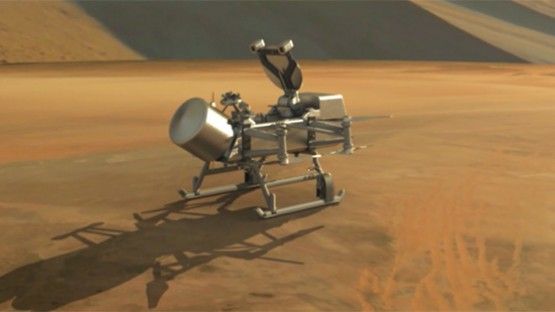As any good project manager will tell you, goals are necessary to complete any successful project. The more audacious the goal, the more potentially successful the project will be. But bigger goals are harder to hit, leading to an increased chance of failure. So when the team behind one of NASA’s most unique missions released a list of goals this week, the space exploration world took notice. One thing is clear – Dragonfly will not lack ambition.
The list was published in The Planetary Science Journal and addresses many of the looming questions surrounding the second-largest moon in the solar system. This won’t be the first time a spacecraft visited Titan. Huygens made a successful landing in 2004, but its instruments were designed to monitor the atmosphere rather than surface conditions, partly because the craft’s designers were so unsure about its successful descent they hoped to get as much data as they could if it failed on impact.
That left question marks on some of the most interesting aspects of Titan – including what it was like on the surface. There are three main focus areas for Dragonfly, which hope to address those question marks – researching the moon’s prebiotic chemistry, understanding its active methane cycle, and exploring any chemical biosignatures.
All three of those goals are underpinned by the long-standing theory that Titan might be able to support life. Any life that formed on the moon would be drastically different from our own – most likely, it would have evolved to use methane as a solvent rather than water. Hence the interest in the methane cycle.
Even if there isn’t life on the moon, that doesn’t mean there couldn’t eventually be. Understanding whatever prebiotic chemistry is already taking place on Titan is useful for postulating what life might eventually evolve there and what the chemistry on Earth was like before the first lifeforms were created.
If there is already life on Titan when we arrive, Dragonfly will be well equipped to find it. Dozens of potential chemical imbalances could indicate a biosignature, and Dragonfly is equipped with a mass spectrometer (known as DraMS) and a drill (known as DrACO) to find it.

Credits: NASA/Johns Hopkins APL
Those tools, along with another type of spectrometer and a geophysics/meteorology sensory suite, will complete Dragonfly’s complement of scientific hardware. But with a launch date of 2027 and a landing date of 2036, it will be a long time before any tool will be put into action on the surface of Titan. But what they find there might very well be worth the wait.
Learn More:
Cornell – Dragonfly mission to Titan announces big science goals
The Planetary Science Journal – Science Goals and Objectives for the Dragonfly Titan Rotorcraft Relocatable Lander
Science Times – NASA Dragonfly Mission Releases Science Goals and Objectives on Saturn’s Moon Titan
UT – NASA is Going Back to Saturn’s Moon Titan, this Time With a Nuclear Battery-Powered Quadcopter

